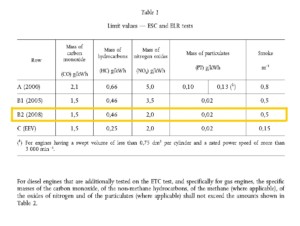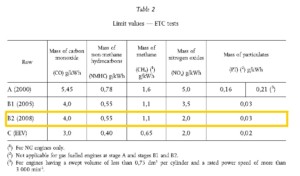CLEANER ENERGY
An enormous number of trucks in Australia are powered by hydrocarbon fuel, in particular, diesel fuel. This trend is likely to continue into the future because it has a high energy content, is readily available, and it promotes engine reliability.
The significant gaseous and particle emissions produced by the combustion of diesel fuel include:
Greenhouse gases
- Carbon dioxide (CO2)
- The common ambient air pollutants: carbon monoxide (CO)
- Oxides of nitrogen (NO and NO2 expressed as NOx)
- Ozone (O3)
- Particulate matter (PM 10 and PM 2.5)
Hazardous air contaminants
- Hydrocarbons (HC) (or unburnt fuel).
Our Health
Human health and the environment is affected by air pollution.
Practically all motor vehicles, including trucks and buses, contribute to urban air pollution and greenhouse gases ñ although the contribution made by trucks is very low in comparison to passenger motor vehicles. Further, it is estimated that articulated trucks account for about 2.5% of greenhouse gases.
Fuel Quality Improvements – Government
Australia has taken steps to introduce stricter diesel fuel quality standards and regulations that make it illegal to sell (new) diesel powered vehicles if they do not reach certain vehicle emission standards.
All new vehicles must conform to the approved EURO Standard, which is mandated by the Australian Design Rules (ADRs)
Further, and what is believed to be a world’s first, the Australian governments have agreed to a National Environment Protection (Diesel Vehicle Emissions) Measure (the Diesel NEPM’s) that sets out standards for in-service emissions and their management.
The Goal of this Measure is to reduce exhaust emissions from diesel vehicles, by facilitating compliance with in-service emissions standards for diesel vehicles.
Also, the Federal Government made changes so that certain road users, including trucking operators, would only be eligible to receive fuel excise credits if it can be demonstrated that their vehicles are emission certified or are properly maintained.

Stricter Diesel Fuel Quality Standards
The Fuel Quality Standards Act 2000 provides the framework for the establishment of national fuel standards for automotive use.
The first set of standards, for both diesel and petrol came into effect on 1 January 2003 at which time is was a requirement that diesel sold in Australia could not have a sulphur content in excess of 500 parts per million (ppm).
It is important to reduce the sulphur content in diesel fuel because it contributes to fine PM emissions. Sulphur can also lead to corrosion and wear in engine systems.
Diesel Vehicle Emission Standards
Vehicle emission standards are given legal effect as Australian Design Rules (ADRs) under the Federal Motor Vehicle Standards Act 1989.
Current Australian ADRs are based upon European standards (known as Euro standards) and equivalent (as far as possible) United States standards.
Specifically in relation to ADR emission standards for heavy diesel vehicles (greater than 3.5 tonnes gross vehicle mass), the following table demonstrates the reductions in CO, HC, NOx and PM that have and will occur in vehicles sold in Australia.
The HEMS Emission Management System has been proven to improve the emissions.
Independent emission testing has been carried out in Germany/Austria by Dr Walter Stoltz of the UWS Environmental Services, Kufstein – ref (Engine Emissions Test Results) Germany

(Reference ADR 80 vol 1 + ADR 80 Vol 2)

(Reference ADR 80 vol 1 + ADR 80 Vol 2)
